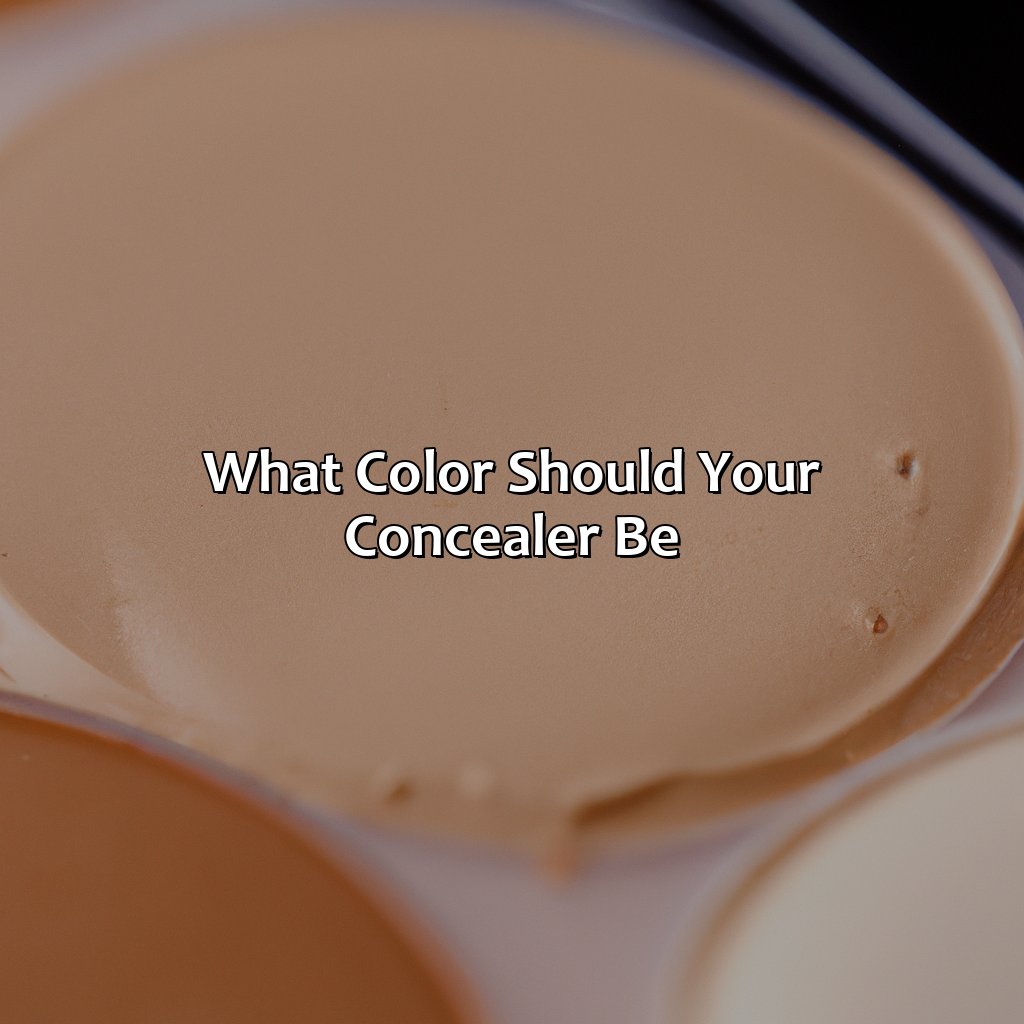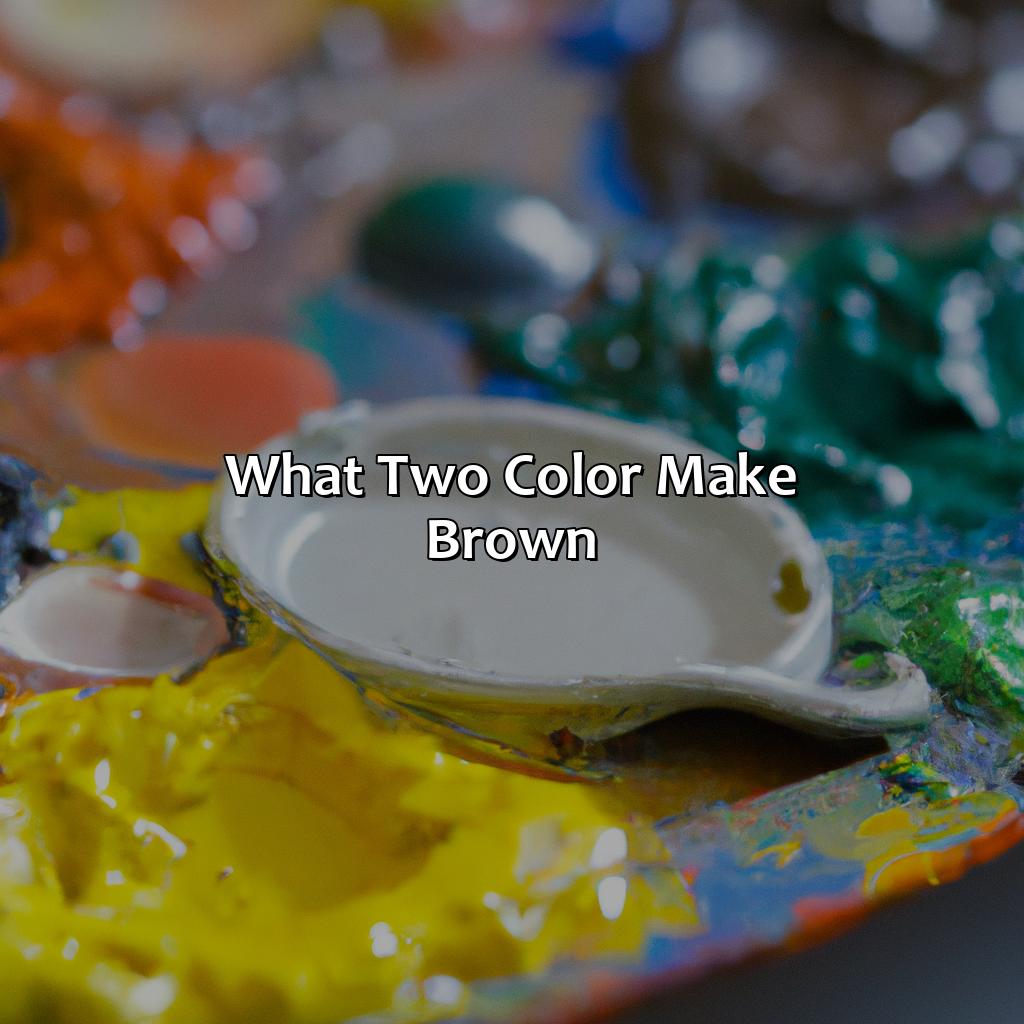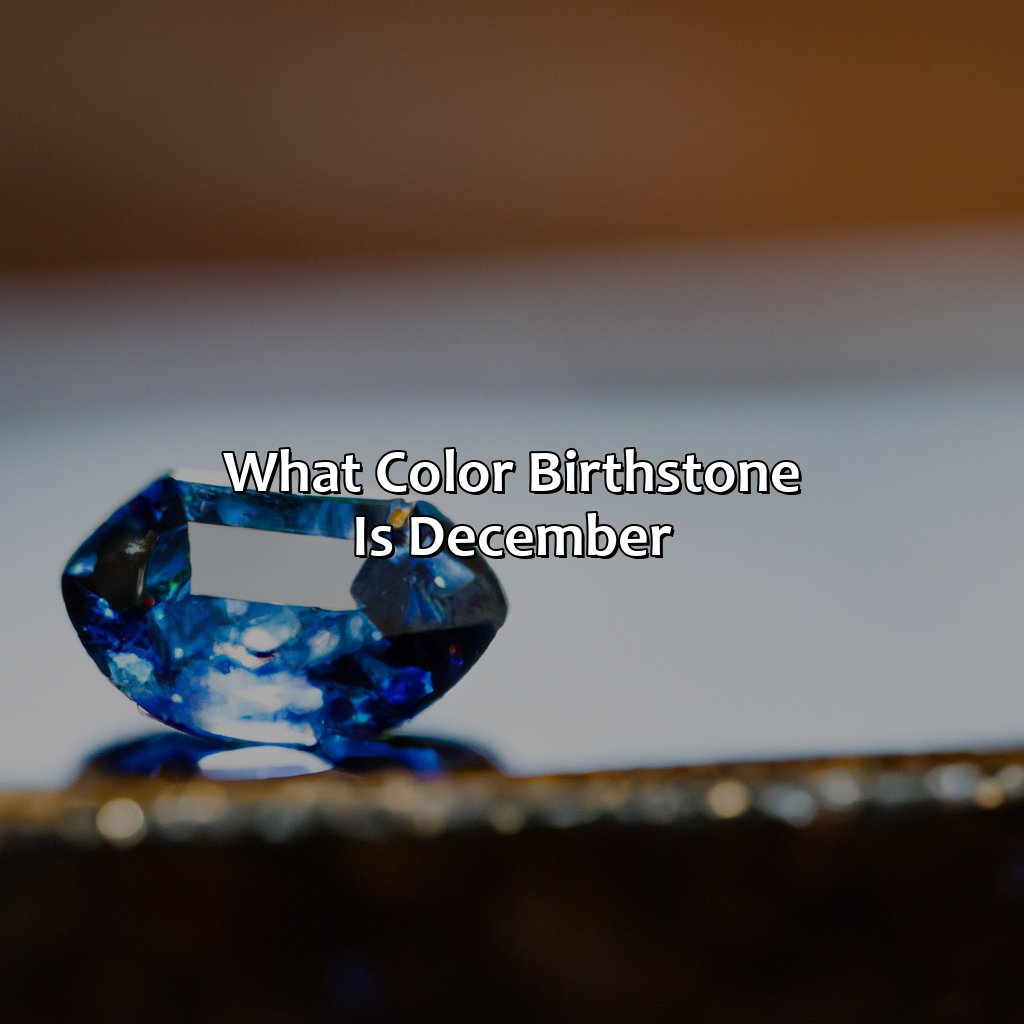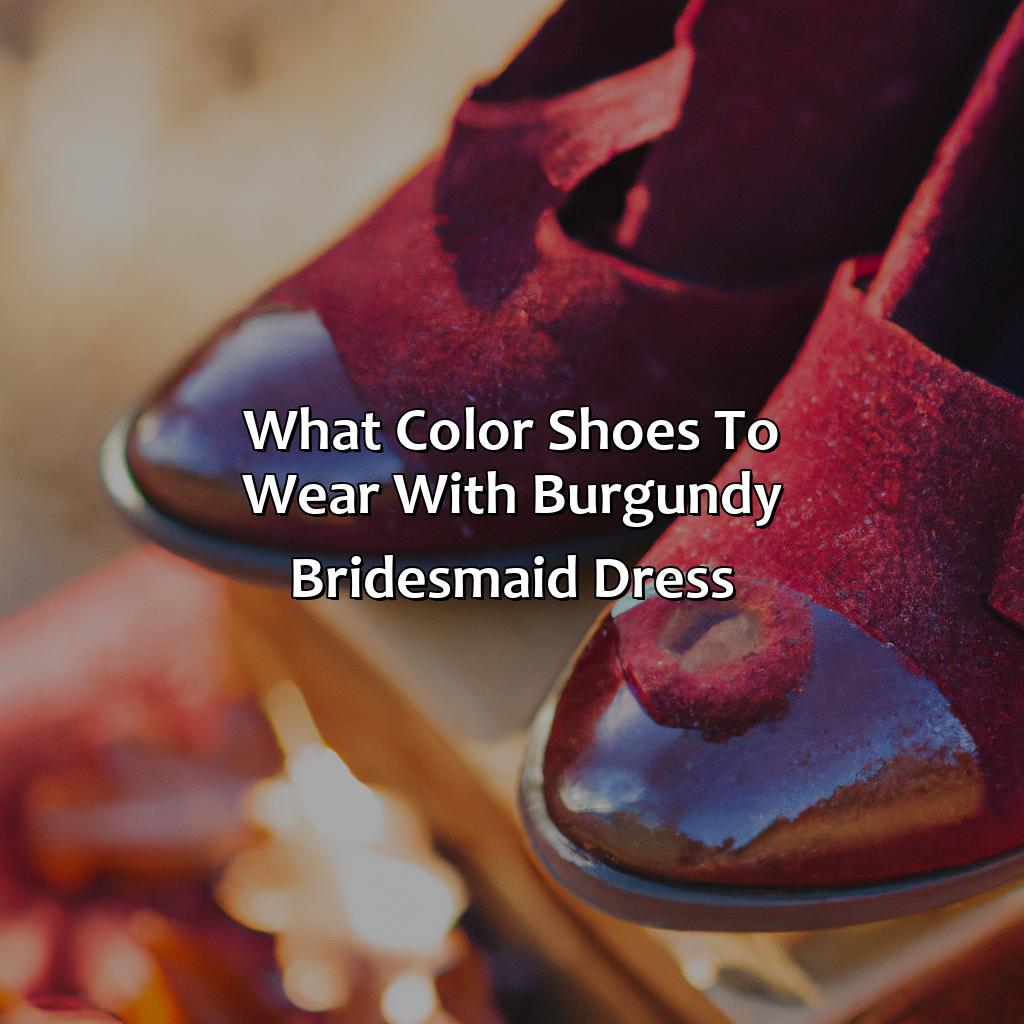Key Takeaway:
- Understand your skin concerns and choose the right concealer type and coverage level to address them effectively.
- For the right concealer color, identify your skin tone (warm, cool or neutral) and choose a shade that complements your complexion and undertones.
- Also consider the type of concealer (stick, liquid or cream) and application techniques (blending, setting, highlighting) to get the most flawless results for your skin imperfections.
Understanding Concealers
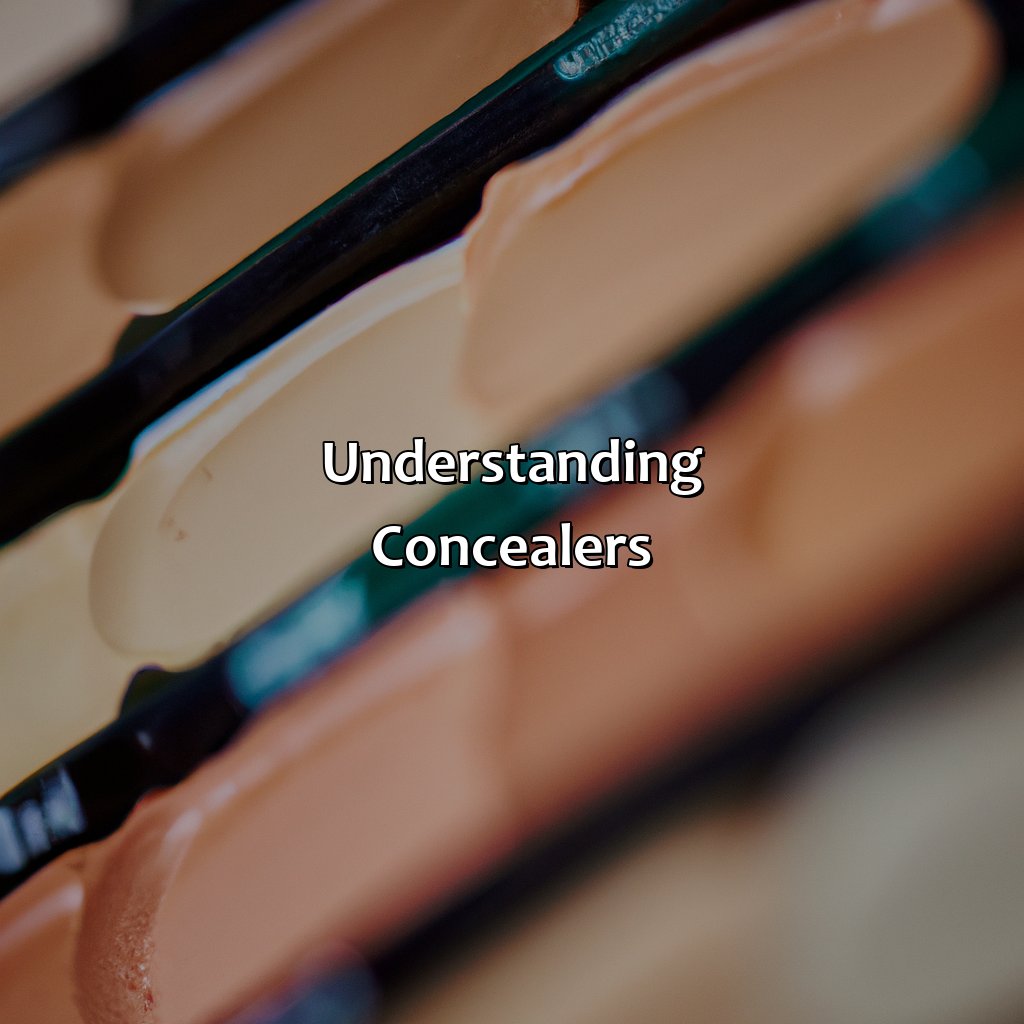
Photo Credits: colorscombo.com by Gerald Martin
Understanding the Art and Science of Concealers:
When it comes to concealing pesky blemishes, under-eye circles, and hyperpigmentation, finding the right concealer can be a game-changer. Concealers come in different types, colors, and textures to cater to diverse skin concerns and preferences. Understanding concealer types, coverage, and concealing techniques can make a significant difference.
Choosing the right concealer shade is essential. A shade lighter than your skin tone can help brighten under-eye areas, while one that matches your skin tone can create a natural look. Green or yellow color-corrective concealers can counteract redness and purple undertones, respectively. Orange or peach concealers are great for addressing dark circles if you have medium skin tones, while salmon or pink-based concealers are suitable for fair skin tones.
To get the most out of your concealer, consider your skin concerns and the coverage you desire. Liquid and cream concealers are ideal for most skin types, while stick concealers are better for oily skin. A full-coverage concealer is great for hiding severe discoloration or breakouts, while a sheer formula can create a natural finish. Patting the concealer instead of rubbing it can prevent creasing and enhance its longevity.
Lastly, always keep in mind that everyone’s skin is unique, and concealers can react differently. Finding the perfect match takes time and experimentation. Don’t be afraid to consult a makeup artist or beauty expert if you’re struggling to find the perfect formula or technique.
True Story:
Lisa had always struggled with concealing her under-eye circles until she found a peach-based concealer. She used to apply a lighter shade, thinking it would brighten her under-eye area, only to end up looking like a panda. After researching the concealing techniques and experimenting with different shades, she found the perfect match. Now, she always receives compliments on her glowing complexion.
Finding the Right Color for your Skin Tone
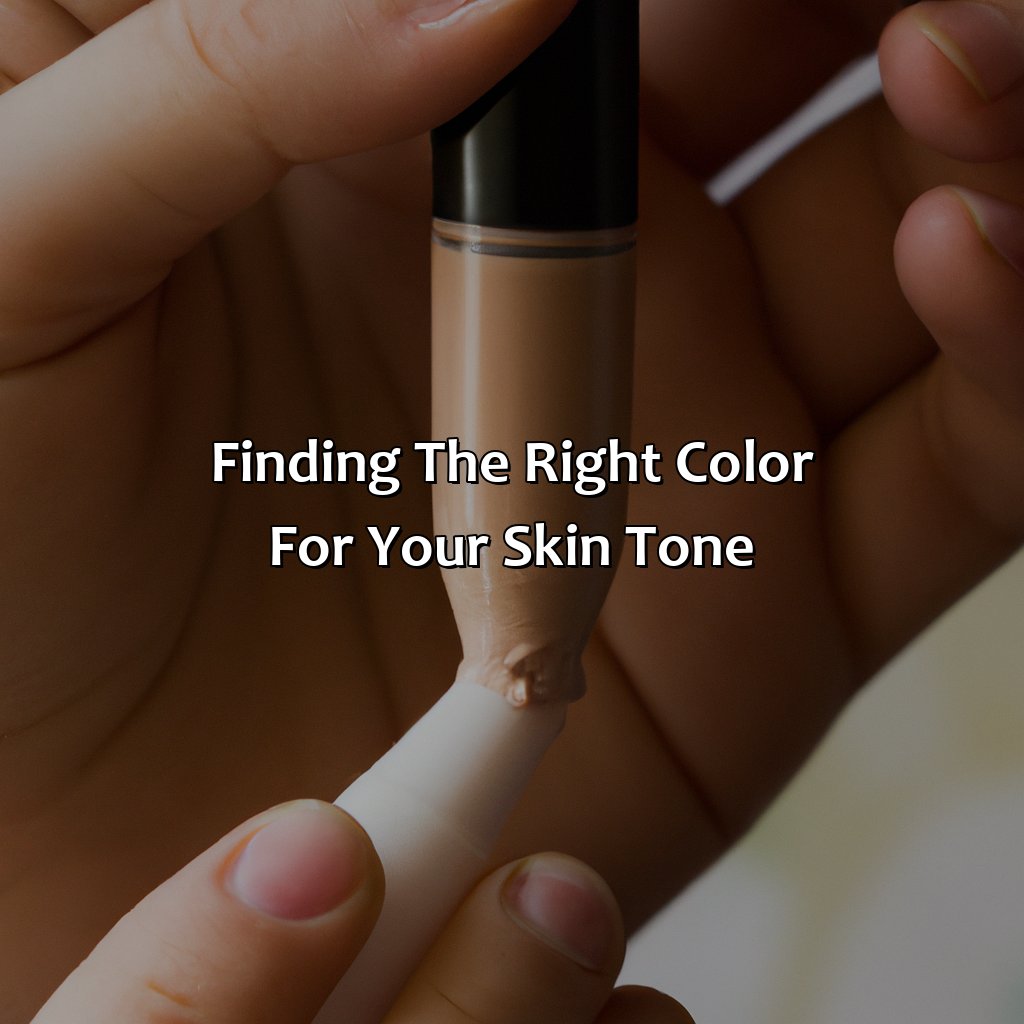
Photo Credits: colorscombo.com by Mason King
Identify your skin tone: warm, cool, or neutral? To find the perfect concealer color you need to know this. And then choose a shade that matches. Color correction of blemishes, dark circles, hyperpigmentation, or discoloration is possible with the right shade. Here’s how:
Identifying Your Skin Tone: Warm, Cool, or Neutral
Understanding Your Skin Tone for Concealer Application
Knowing your skin tone before picking the right concealer is crucial for flawless makeup application. Here are some ways to determine your skin’s undertone:
- Warm undertones: If you have golden, yellow, or peach tones, you fall under the warm category.
- Cool undertones: Pink, blueish hues or redness in your skin indicate cool undertones.
- Neutral undertones: Those who have a mix of both warm and cool tones are referred to as neutral.
- Yellow Undertones: People with a yellow complexion should opt for concealers that complement their natural undertone.
Remember that not only does knowing your skin’s underlying tone help find the perfect shade of concealer but it also helps achieve other makeup looks from eyeliner shades to lipsticks.
Additionally, fair-skinned people tend to have cool or neutral undertones with the tendency towards pinkiness. Individuals with an olive-colored complexion usually have warm tones, while medium to dark-skinned people often have red or golden hues in their skin.
It is important to note that color-correcting concealers can also be used alongside regular concealers when necessary. According to beauty experts at Cosmopolitan.com “green concealer neutralizes redness…“, so if an individual has reddened acne scars use a green concealer underneath foundation and apply regularly colored concealer on top for best results.
Accordingly, discover your skin’s tone and type effectively before selecting the correct color of concealer while remembering that understanding this info is beneficial beyond just daily beauty necessities.
Finding the perfect concealer shade is like searching for a needle in a constantly-changing color spectrum haystack.
Choosing the Right Shade: Light, Medium, or Dark
When it comes to concealer, finding the right shade is essential for a seamless makeup look. Matching your skin tone can be tricky, but understanding the color spectrum and identifying your skin’s undertones can make selecting the perfect shade easier.
Here are five key points to consider when choosing the right concealer shade:
- Determine your skin’s undertone – warm, cool, or neutral
- Select a shade that is one to two shades lighter than your foundation for under-eye coverage
- Match your concealer shade to your foundation for spot coverage
- Test the color match on your face in natural lighting
- Consider using multiple shades for different areas of your face
Additionally, it’s important to note that concealers come in different textures and finishes like matte or dewy. Cream concealers are best for dry skin, while liquid concealers work well for oily or combination skin types.
It’s also helpful to prep your skin before applying concealer by moisturizing and priming, then blend with a brush or sponge. Setting with powder can help prevent creasing and prolong wear time.
A common mistake when selecting concealer shades is going too light or too dark. Going too light can create a harsh contrast with your foundation and draw attention to problem areas rather than cover them up. Going too dark can create an unflattering ashy effect on the skin.
Interestingly, concealing dates back centuries when ancient Egyptians used lead-based products to mask imperfections and highlight features like their eyes and brows. Thankfully, safe makeup products have evolved since then!
In summary, selecting the perfect concealer shade is all about understanding your skin’s undertones and considering factors like texture and finish. By testing color matches in natural lighting and avoiding common mistakes like going too light or dark, you’ll achieve a flawless complexion every time!
From sticks to creams, find the coverage level that suits you with these types of concealers.
Types of Concealers
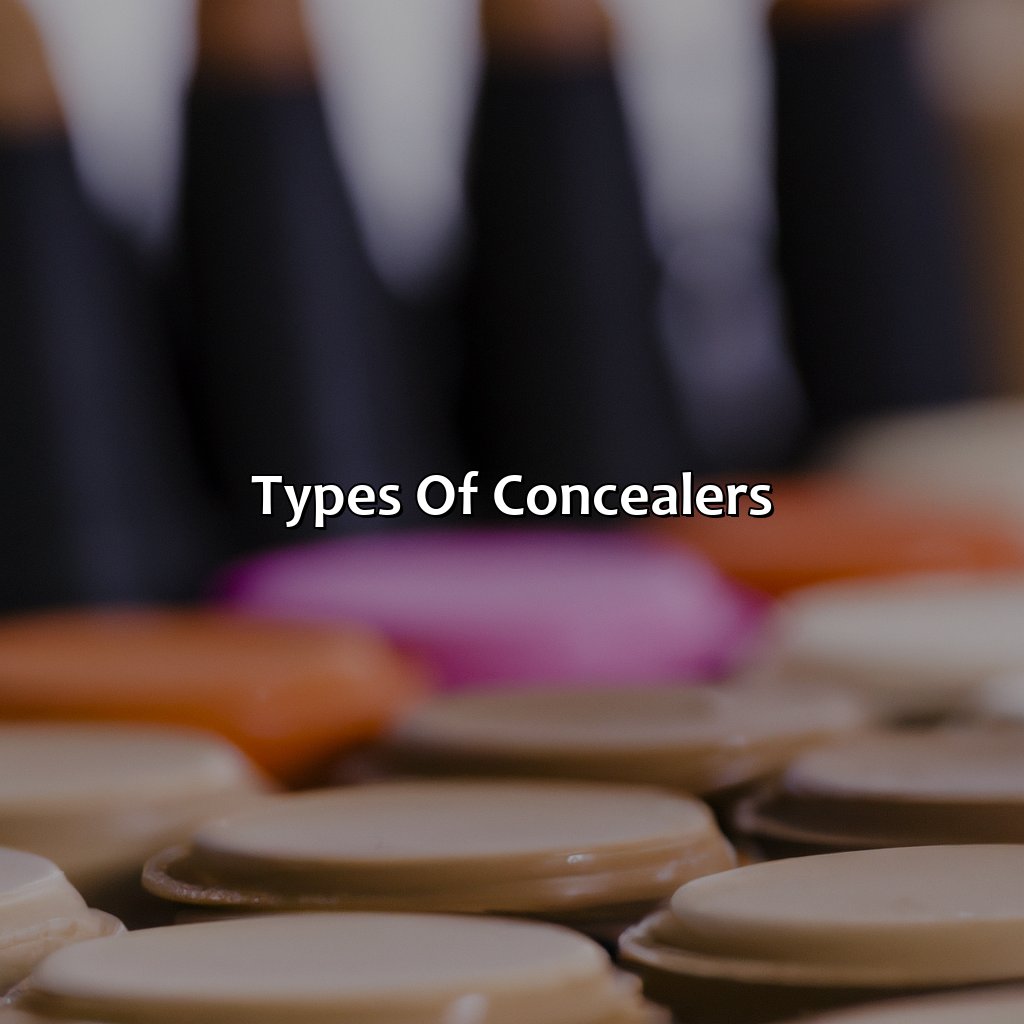
Photo Credits: colorscombo.com by Scott Williams
Choosing the right concealer for your skin is essential. There are three main types: stick, liquid and cream concealers. Each type has its own benefits; for example, coverage level, beauty brands, makeup palette, sheer coverage, full coverage, beauty review, beauty innovation, neutralizer, highlighting, contouring and beauty essentials. Let’s explore each one in more detail.
Stick Concealers
- Stick Concealers provide a more concentrated formula than other concealers, making it highly pigmented and ideal for covering localized imperfections.
- They are easy to apply directly to the target area without any mess or spillage.
- Its compact design makes it highly portable, enabling you to carry them in your bag wherever you go.
One unique feature of Stick Concealers is their longevity. They can last for hours without smudging or fading away. This aspect makes them a reliable option, especially if you’re anticipating a long day at work or running errands.
Pro Tip: Experiment with different beauty brands when selecting the right color match for your skin tone. Some companies have diverse shade ranges that cater to either warm, cool or neutral undertones.
Liquid concealers: the sheer way to fake a full night’s sleep or the full-coverage solution to all your pimple problems, according to beauty reviews and innovation.
Liquid Concealers
Liquid concealers are a highly sought after option for those in search of both sheer coverage and full coverage. These types of concealers come with a smooth, liquid-like consistency that applies on the skin effortlessly. With consistent beauty reviews championing its efficacy, this beauty innovation has become a must-have item in almost everyone’s makeup kit.
What sets a liquid concealer apart is the ease at which it blends into the skin, making it ideal for those with dry or mature skin types. The formulation is designed to provide an even finish and works well when applied under the eyes to hide dark circles or blemishes on any part of the face.
Many liquid concealers also come with nourishing properties, helping boost collagen production to maintain supple-looking skin while tackling issues like pigmentation and fine lines.
Overall, a liquid concealer proves to be an excellent investment giving an effortless application along with some incredible benefits for your skin – making it one of the most preferred forms of concealer today.
Transform your face with cream concealers – your ultimate beauty weapon for neutralizing, highlighting, and contouring.
Cream Concealers
Cream concealers are a type of makeup product that is thicker in consistency. They are perfect for people who prefer full coverage and a matte finish. The texture of these concealers allows for easy blending and building coverage without settling into fine lines or wrinkles. You can use them as a neutralizer before applying foundation or solely as a highlighting product after it.
These concealers come in various shades, ranging from light to dark, making it easy to find the perfect match for your skin tone. They also come in different undertones, such as warm, cool, or neutral. Choosing the right shade is essential, especially if you’re planning on using it for contouring or highlighting.
One unique feature of cream concealers is that they work well when paired with other beauty essentials like primers and setting sprays. Cream formulas tend to stay put longer on the skin when prepared with a primer and set with powder or spray.
A common historical fact about cream concealers is that they originated from stage makeup used in theatrical productions where heavy coverage was needed under harsh lights. Today, they have become an essential part of everyday makeup routines for their versatility and long-lasting results.
Blend it like a pro and highlight like a natural beauty guru, because flawless concealer application is the key to looking put-together.
Additional Tips for Applying Concealer
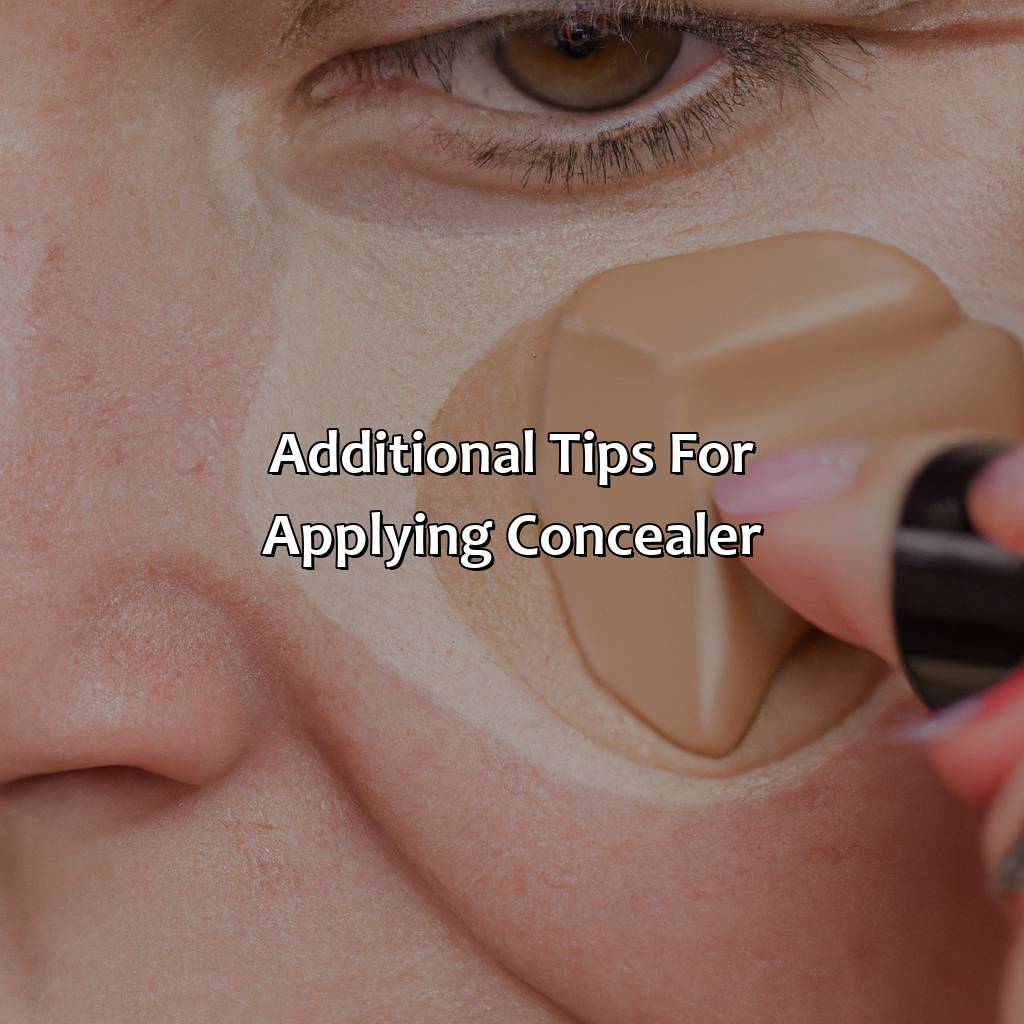
Photo Credits: colorscombo.com by Henry Lewis
Maximize the effectiveness of your concealer for a flawless finish!
First, prep your skin with a skincare routine. Then, learn techniques on how to apply and blend it. Get professional tips for a natural makeup look. Finally, set it with cosmetics best-suited to your skin. Voila! You’re all set with your makeup routine.
Prepping your Skin
Properly preparing your skin before applying concealer is essential for a flawless finish. It ensures that the concealer smoothly covers blemishes and blends well with other facial products in your makeup routine.
Here’s a simple 3-step guide for prepping your skin:
- Start by cleansing your face with a gentle cleanser to remove dirt and impurities.
- Apply a moisturizer to keep your skin hydrated and prevent flakiness or creasing of the concealer.
- Use a primer to create an even canvas for the concealer to adhere to.
It is also crucial not to layer too many facial products as it can cause clogged pores, leading to breakouts. One must follow their skincare routine before applying any makeup product, primers can be skipped if they experience clogging of pores.
To avoid cakey or oily-looking concealers, always choose products that suit your specific skin type. For instance, those with dry skin should stick to liquid concealers while those with oily skin would benefit from powder concealers.
Lastly, one of the most important things when it comes to prepping the skin is staying consistent with your skincare regimen. Beauty secrets emphasize keeping up with one’s skincare routine improves one’s overall complexion making it easier for the concealer application process.
A close friend of mine had acne-prone unique textured skin which helped her discover that using micellar water instead of regular toner helps improve her makeup base and keeps her blemishes under control, resulting in no bubbles on her coverage.
Remember that proper preparation makes for great results!
Blending your concealer is like blending in with society, it takes time and effort but the end result is worth it.
Applying and Blending
Achieving flawless coverage with concealer requires proper application and blending techniques. Here are some makeup tips and beauty advice on how to apply and blend your concealer seamlessly for a natural-looking finish.
- Start with a clean, moisturized face as this ensures smooth application of the product.
- Dab the concealer lightly onto the area you want to cover using either your finger or a brush.
- Next, use tapping motions with your fingers or stippling motions with a brush to blend the concealer into your skin thoroughly.
- Make sure not to rub or drag the product across the skin, as this can cause streaking or patchiness.
- Blend outwards from the center of the blemish or under-eye circles to avoid harsh lines.
When it comes to applying and blending concealer, there are essential techniques that enable you to achieve that sought-after flawless finish. Follow these simple suggestions on cosmetics application that work effortlessly:
- Use less product at first, gradually building up coverage until you get your desired result.
- Starting with less product helps prevent creasing and caking during wear and ensures smoother initial coverage.
- Always prep your eye area before applying concealer by applying an eye cream or serum.
- Eye creams help depuff bags and reduce dark circles which make spotting easy for perfect shade matching.
Incorporating these makeup application tips into your routine will enhance your cosmetics experience, delivering amazing results anytime you use them!
Setting your concealer is like the cherry on top of your beauty routine, it’s the final touch that makes all the difference in your makeup look.
Setting your Concealer
To ensure that your concealer lasts all day and stays in place, it is crucial to set it properly. This step helps to prevent creasing, smudging, and fading of the concealer. Here’s how you can effectively set your concealer shade:
- Apply a loose or pressed powder over your concealer shade with a fluffy brush.
- Gently dab the powder onto the areas where you applied the concealer, ensuring that you do not disturb or move the concealer underneath.
- Let the powder sit for a few minutes (approximately 5-10) then use a clean brush to remove any excess product.
- For an additional setting step, spritz rosewater or setting spray on your face.
By following these steps for setting your concealer shade as a part of your daily beauty routine, you can extend the longevity of your makeup while keeping it in place and looking fresh all day long.
When using loose powder for setting your concealer shade, apply it sparingly as an excess amount can make the area look cakey or settle into fine lines. Opt for translucent powders if you do not want to alter the color of your skin tone with the powder.
When using setting spray to prolong the wear-time of your makeup looks, remember to hold it at arm’s length from your face and not too close as this can cause splotchiness or unevenness on specific areas of skin tones. Finally, choose cosmetic products that contain matte finish formulas if you have oily skin tone and those that contain dewy finishes if you have dry skin tone.
Even the best concealer can’t hide the mistake of not blending properly, so don’t rush your beauty regimen!
How to Avoid Common Concealer Mistakes
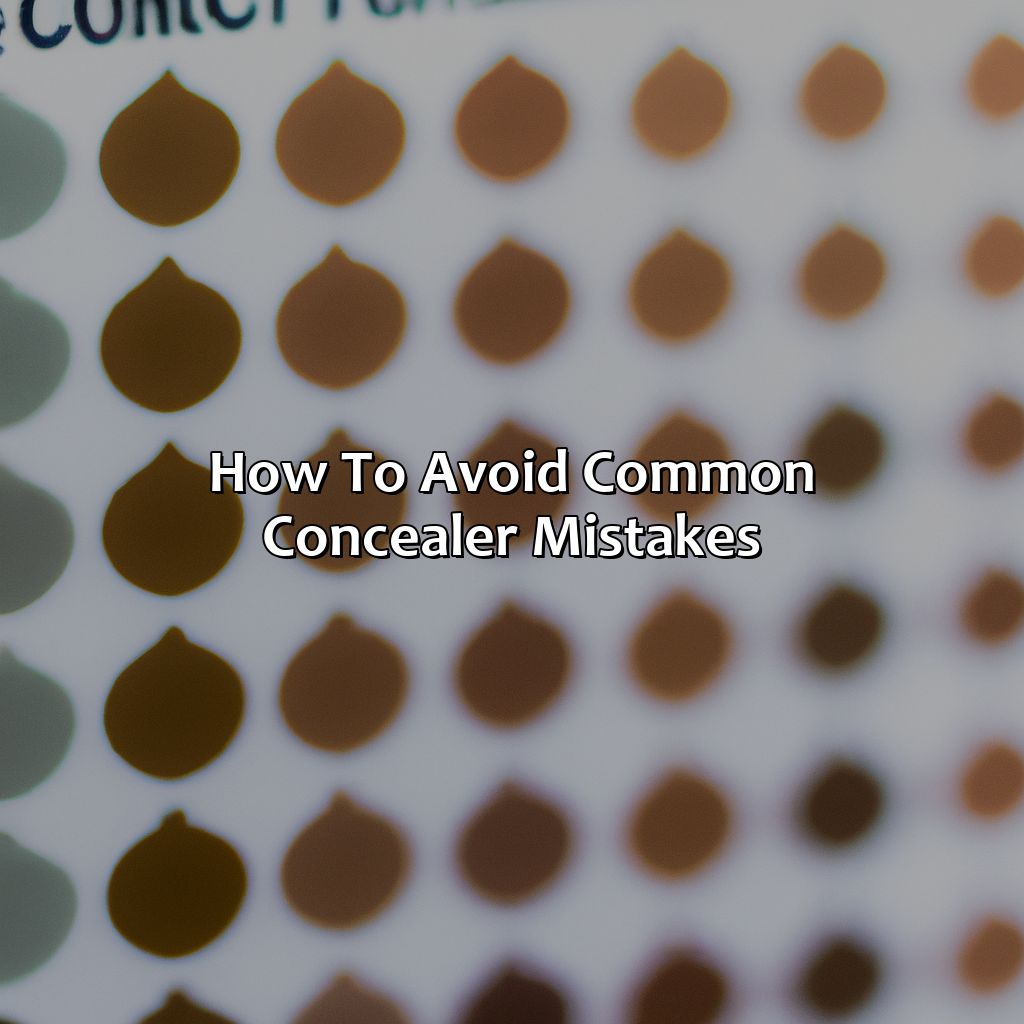
Photo Credits: colorscombo.com by Daniel Garcia
Are you tired of making common mistakes while concealing your face? Don’t worry, we have got your back! Here are some beauty hacks to help you avoid common concealer mistakes and achieve flawless skin effortlessly.
- Choose the right shade of concealer, depending on the skin tone, to avoid a mismatched look.
- Blend the concealer well to avoid cakey or patchy appearances.
- Don’t apply too much concealer, as it can draw attention to the problem areas and make them more prominent.
- Avoid using concealer as a substitute for foundation, as it won’t provide full coverage and may result in an uneven skin tone.
- Always set your concealer using a powder or spray to make it last longer and prevent creasing.
Incorporating these beauty tips into your beauty regimen can help you avoid common concealer mistakes effectively. However, it’s crucial to remember that each person’s skin is unique, and you may need to adjust your beauty tutorial accordingly.
When applying concealer, pay attention to the unique details of your face, such as the under-eye area, blemishes, and dark circles. Focusing on these features can help you achieve a more polished look.
One of our clients had been applying too much concealer for years, thinking it would make her problem areas disappear. However, the opposite happened, and she ended up looking fake and unrealistic. By using less product and blending it well, we were able to create a more natural look that brought out her true beauty.
By becoming more aware of your unique features and incorporating these beauty hacks, you can create a more flawless and natural appearance that enhances your natural beauty.
Five Facts About What Color Your Concealer Should Be:
- ✅ Your concealer should be one to two shades lighter than your skin tone. (Source: Allure)
- ✅ Green concealer is used to neutralize redness, while orange concealer is used to cancel out blue or purple tones under the eyes. (Source: Harper’s Bazaar)
- ✅ Yellow concealer can help brighten dark, under eye circles. (Source: Byrdie)
- ✅ Peach or salmon concealer can help counteract dark circles on deeper skin tones. (Source: ELLE)
- ✅ It’s best to test concealer shades in natural light to ensure a proper match. (Source: Cosmopolitan)
FAQs about What Color Should Your Concealer Be
What color should your concealer be?
Your concealer should be one or two shades lighter than your skin tone for highlighting and brightening under the eyes or other areas of the face. If you’re using concealer to cover imperfections such as blemishes, go for a shade that matches your skin tone exactly.
What if I have dark circles under my eyes?
If you have dark circles, look for a peach or orange-toned concealer that will help neutralize the darkness. Apply it before your regular concealer to brighten and even out the area.
Can I use the same concealer for my face and under eyes?
Yes, you can use the same concealer for both your face and under eyes, but keep in mind that the under eye area requires a lighter shade. If you’re using the same concealer all over, choose a shade that matches your skin tone and then use a lighter shade for under the eyes.
Should I use a green concealer to cover redness?
Yes, a green-toned concealer can help neutralize and cover redness on the face. Apply it sparingly on the affected areas and then blend it in with your regular concealer.
What if I can’t find a concealer that matches my skin tone?
If you’re having trouble finding a concealer that matches your skin tone exactly, go for a shade that’s slightly lighter than your skin tone so that it will blend in seamlessly. You can also mix two shades together to get the perfect match.
How do I know if my concealer is too light or too dark?
If your concealer is too light, it will look ashy and unnatural. If it’s too dark, it will draw attention to the area rather than conceal it. Always swatch your concealer on your skin and blend it in to make sure it’s the right shade for you.
